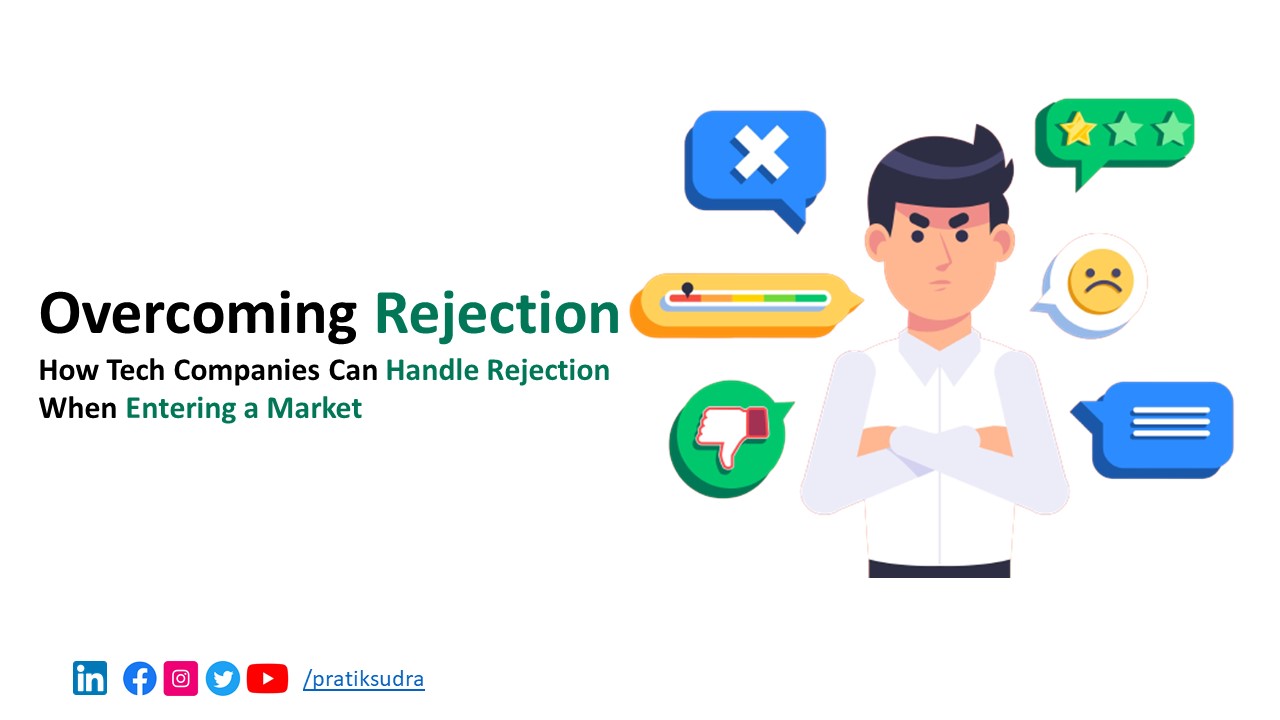Synopsis
This blog explores the different types of rejection that tech companies may face when entering a market, such as rejection from investors, potential customers, competitors, and industry regulators. The article emphasizes the importance of understanding why the rejection is occurring and provides strategies for handling each type of rejection. These strategies include refining the pitch to better align with the needs of investors, offering trials or demos to potential customers, differentiating the product or service from competitors, and seeking the advice of legal experts to navigate regulatory requirements. Through persistence, adaptability, and a willingness to learn and improve, tech companies can overcome rejection and continue to pursue their goals.
Table Of COntent
- Introduction
- Rejection from Investors
- Rejection from Potential Customers
- Rejection from Competitors
- Rejection from Industry Regulators
- Conclusion
Introduction
For tech companies entering a market, rejection can be a common experience. Facing rejection can be discouraging, but it's important for tech companies to understand the various types of rejection they may face and how to handle them. Here are some examples of rejection that tech companies may face when entering a market and how to handle them:
Rejection from Investors
When pitching to investors, it's possible to face rejection. Investors may be hesitant to invest in a new or untested technology, or may not see the potential for return on investment.
To handle this rejection, it's important to take the feedback received and work on improving the pitch. Research the investor and understand their needs, and refine the pitch to better align with those needs. Alternatively, explore other options such as crowdfunding or bootstrapping the company to generate the necessary capital.
Rejection from Potential Customers
Tech companies may also face rejection from potential customers who are not yet convinced of the value of the product or service. In this case, it's important to understand why the potential customer is not interested and address any concerns or objections.
Offer trials or demos of the product or service to give potential customers a chance to experience it firsthand. Additionally, focus on building brand awareness through marketing and advertising to increase interest in the product or service.
Rejection from Competitors
Competitors may also reject a tech company's entry into the market by attempting to block market access or spreading negative information about the company.
In this case, it's important to differentiate the product or service from competitors and clearly communicate the unique value it offers. It's also important to build relationships with partners and stakeholders in the industry to increase visibility and support for the company.
Rejection from Industry Regulators
In some cases, tech companies may face rejection from industry regulators due to issues with compliance or other regulatory requirements.
In this case, it's important to fully understand the regulations and requirements and work to comply with them. Seek out the advice of legal experts and industry professionals to navigate the regulatory landscape and ensure compliance.
Conclusion
In conclusion, rejection is a common experience for tech companies entering a market. By understanding the various types of rejection they may face and how to handle them, tech companies can overcome rejection and continue to pursue their goals. Through persistence, adaptability, and a willingness to learn and improve, tech companies can successfully enter a market and thrive.


